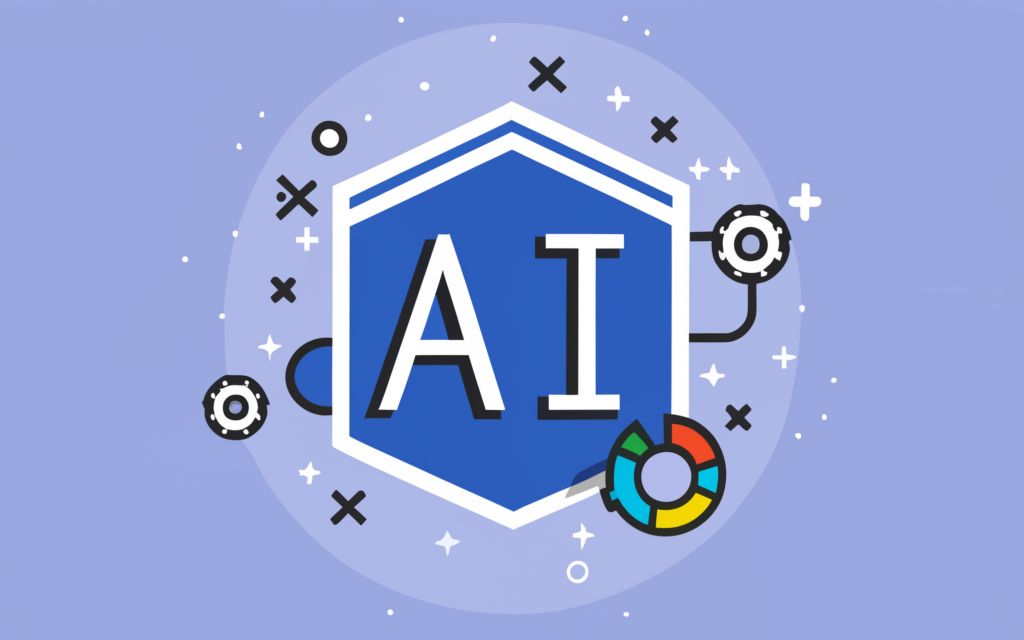
Azure Backup is a crucial service for data protection and disaster recovery in the cloud. Here are some key stats:
- Over 1 exabyte of data is protected using Azure Backup
- Supports backup for over 80 Azure services and on-premises workloads
- Used by over 60% of Fortune 500 companies
- Over 10,000 Recovery Services vaults used globally
- 99.9% monthly backup success rate guaranteed in SLAs
Introduction to Azure Backup
Azure Backup is a native Azure service that provides simple, secure, and cost-effective solutions to back up your data and recover it from the Microsoft Azure cloud.
What is Azure Backup? Definition and overview
Azure Backup is a scalable solution that protects your application data with zero capital investment and minimal operating costs. It supports backing up data from Azure Virtual Machines, Azure SQL databases, Azure Files, and more with flexible backup policies and data retention options.
Key capabilities include on-demand and scheduled backups, instant file recovery, backup retention policies, and centralized monitoring and management through the Azure portal.
The importance and benefits of using Azure Backup
Adopting Azure Backup provides numerous benefits:
- Meet compliance needs with encrypted backups and retention policies
- Achieve cost savings with low-cost backup storage options
- Simplify data protection across hybrid and cloud environments
- Reduce risk with automated backups and rapid restoration of data
- Gain operational efficiency with centralized management at scale
In short, Azure Backup is indispensable for modern data protection requirements in enterprise environments.
Key Features of Azure Backup
Some major features and capabilities of Azure Backup include:
- Backup for Azure IaaS and PaaS services like VMs, SQL databases, file shares
- Integration with on-premises Windows Servers and VMware for hybrid backup
- Point-in-time restore with item and file recovery options
- Long-term retention of backup data with Archive tier
- Built-in infrastructure for high availability
- Powerful security features like soft delete and data encryption
- Centralized monitoring, alerts, reporting through Backup Center
- Automated backup policies and schedules
- Support for Azure role-based access control (RBAC)
- Scripting and automation through Azure PowerShell and CLI
Backup storage options and capabilities
Azure Backup offers three types of replication storage options:
Locally Redundant Storage (LRS)
- Copies your backup data three times within a single physical location
- Lowest cost option
- Protection against local hardware failures
Geo-Redundant Storage (GRS)
- LRS + copies to a secondary region hundreds of miles away
- High availability in case of regional outage
- Default and recommended option
Zone Redundant Storage (ZRS)
- Copies across three Azure availability zones
- Highest resiliency and redundancy
- Ensures backups in same region even during zone-level failures
Backup vaults are stored in Recovery Services vaults with configurable retention policies from 1-100 years. An archive tier provides cost-optimal long term retention.
Backup for Azure Disks
Azure Backup enables creating recovery points and restoring files, folders, or full volumes from Azure Managed Disks backups. This allows protecting data on IaaS Azure Virtual Machines without installing backup extensions.
Key capabilities when backing Azure disks up to a Recovery Services vault include:
- Schedule full and incremental backups
- Restore disks to the same or alternate resource groups
- Define backup policies and retention rules
- Take on-demand backups as needed
Integration with cloud migration and modernization
Azure Backup provides vital data protection while enabling cloud migration for virtualized workloads. It integrates with Azure Migrate for simplified cloud migration planning, assessment, and dependency visualization.
For backup and disaster recovery after migrating on-premises VMs to Azure, Azure Backup delivers application-consistent backups of Azure IaaS VMs irrespective of size with no additional licenses.
Azure Backup also enables lifting and shifting on-premises VM backups to Azure for reduced hardware dependencies. This simplifies operational overhead for managing hybrid cloud environments.
Application development and backup considerations
Azure Backup is indispensable for protecting application data across development, testing, staging and production environments.
For example, use Azure Backup to protect application databases like Azure SQL and PostgreSQL. Schedule full and incremental database backups to meet desired Recovery Point Objectives (RPOs).
For containerized applications, back up Azure Kubernetes Service (AKS) clusters natively. Define backup policies at the cluster level with item-level restore.
Enable soft delete in Recovery Services vaults to protect against accidental deletes or malicious attacks. Define the retention period for soft deleted backup items per your compliance requirements.
Networking and its role in Azure Backup
The Azure backbone network facilitates secure and performant data transfers for backup and restore operations. Configure network security groups (NSGs) to allow connectivity only to authorized Azure services IPs for enhanced data protection.
For hybrid environments, Azure ExpressRoute provides dedicated private connectivity for large-scale and consistent data transfer between on-prem and Azure.
Azure VPN Gateway secures site-to-site VPN tunnels to Azure Virtual Networks for trusted access across hybrid workloads. Use VPN Gateways to ensure consistent backups of on-premises assets.
Hybrid cloud and infrastructure support
To handle expanding business needs, most enterprises adopt a hybrid cloud approach that spans private datacenters, public cloud platforms and SaaS applications.
Azure Backup simplifies data protection across hybrid cloud environments through:
Integration with on-premises servers
- Back up Windows and Linux physical servers and VMs hosted in your datacenter
Support for leading virtualization platforms
- Protect VMware VMs and Microsoft Hyper-V VMs across sites
Consistent data plane across Azure regions
- Copy backup data across Azure regions for additional redundancy
This enables standardized data protection policies, recovery procedures and reporting across your hybrid infrastructure.
Benefits of Azure Backup
Adopting Azure Backup provides the following key advantages:
- Operational efficiency – Centrally manage backup policies, infrastructure, and reports through the Azure portal at scale
- Cost savings – Consolidate workloads from distributed environments and benefit from Azure economies of scale
- Simplicity – Set backup schedules and policies with just a few clicks for hundreds of assets
- Security – Encrypt backup data end-to-end and benefit from Azure’s industry-leading security practices
- Compliance – Meet data sovereignty, retention, and recovery requirements with ease
- High availability – Ensure 24/7 uptime for backup and restore operations with built-in redundancy
- Innovation – Leverage cutting-edge Azure services and integrate backup with cloud migrations
Data security and encryption features
Azure Backup provides robust encryption capabilities for securing backup data throughout its lifecycle:
- Data encryption in-transit and at-rest using AES 256-bit encryption
- Integration with customer-managed keys in Azure Key Vault
- Soft delete support to protect against accidental data loss
- Auditing and reporting to demonstrate compliance
- Role-based access control (RBAC) and usage metering
Together, these ensure only authorized applications and users can access your backups to meet security and compliance needs.
Management and governance tools
Azure Backup simplifies backup management by providing:
Centralized monitoring and insights
- Unified view and tracking of backup jobs across hybrid environments
- Pre-defined reports and customizable reporting
- Monitoring through Backup Center and Azure Monitor
Governance capabilities
- Define backup policies, schedules and retention centrally
- Tag assets and filter views for better tracking
- Automate workflows using PowerShell and CLI
Access controls and auditing
- Integrate backups with your RBAC strategies
- Control permissions at scope levels from vaults to backup items
- Enable Azure role-based access control (RBAC)
- Gain visibility through action logs that capture management operations
Support for containers and developer tools
Azure Backup delivers data protection for containerized workloads and integrates with key developer tools:
Azure Kubernetes Service (AKS) backup
- Simplifies backup and restore of Azure Kubernetes clusters
- Cluster-level backups with item-level restore granularity
- Eliminates need for custom scripts or third-party tools
Integration with Azure DevOps
- Provides self-service backups of Azure DevOps organizations
- Integrates natively with Azure DevOps projects
- Backs up source code, build artifacts, release pipelines
Hybrid and multicloud environments
Most enterprises operate hybrid, multicloud environments spanning private datacenters, multiple public clouds, and SaaS applications.
Azure Backup simplifies data protection across complex environments by providing:
Hybrid and multicloud support
- Back up 180+ Azure services, Windows/Linux VMs, SQL databases
- Protect VMware VMs, Hyper-V VMs across regions or on-premises
- Copy backup data across Azure regions for geo-redundancy
Centralized governance
- Apply standardized backup policies across services and locations
- Unified monitoring, alerting, reporting across hybrid workloads
Common data plane
- Move backup data across Azure regions
- Restore backups irrespective of source location like Azure, on-premises or other clouds
Analytics and reporting features
Azure Backup delivers actionable insights through analytics and reporting:
Pre-defined backup reports
- Executive summary, backup jobs, cloud storage, usage trends
- Available across Recovery Services vaults or at scale
Custom reporting
- Flexibly define backup reports using PowerShell
- Customize report scope, schedule, format
Monitoring
- Track backup usage, failures, storage consumption
- Configure alerts for key backup events like failures
- Integrate with Azure Monitor for platform-level tracking
Azure Advisor
- Get recommendations from Azure Advisor to optimize backups
- Take suggested actions directly from Advisor dashboard
Pricing Options for Azure Backup
Azure Backup offers a simple, predictable pricing model with no upfront costs. Here’s an overview:
Overview of Azure Backup pricing structure
Azure Backup billing components
- Protected instances: Per resource protected by Azure Backup
- Storage consumption: Amount of backup data stored per day
- Restore operations: Data restored from recovery points
Pricing considerations
- Billed monthly based on above components
- No limits or additional charges for data transfer
- Free tier provides first 10GB storage per month
Pricing model benefits
- No upfront or capital costs
- Pay-as-you-go based on actual usage
- Scale up and down anytime based on needs
- Save with the Backup free tier
Cost optimization strategies
Optimize storage costs
- Set short retention ranges for non-critical data
- Move old backups to archive tier for long-term retention
- Take fewer recovery points for high-churn resources
Consolidate backups
- Group resources into shared policies for volume discounts
- Back up multiple resources into a single vault
Monitor spend
- Track monthly forecasts in Cost Analysis section
- Analyze spend by resource groups, policies, vaults
- Set custom cost and usage budgets with alerts
- Schedule cost reports using Power BI
Real-life Examples of Azure Backup
Here are two examples demonstrating Azure Backup’s business impact:
Case studies of businesses using Azure Backup
Contoso is a retail company with 100 stores, each with point-of-sale systems running on Hyper-V VMs and SQL databases. By consolidating backups to Azure at scale, they reduced on-premises storage costs by 40% while scaling exponentially.
Woodgrove Bank migrated VMs to Azure but retained old backup data on-premises. By copying legacy backups to Archive tier, they save 65% in storage costs while meeting compliance needs.
Application development and deployment scenarios
Azure Backup improves developer productivity and data protection. Some examples:
- Developers back up source code to Recovery Services vaults in pipelines
- Test and staging environments are backed up with item-level restore
- Pre-production environments use cloud snapshots for instant restore
- Soft delete protects production databases from accidental deletes
Advanced Topics in Azure Backup
Let’s explore some advanced Azure Backup capabilities:
Backup solutions for databases and compute resources
Databases
- 15-minute RPOs for Azure SQL and PostgreSQL
- Page-level restore for faster RTOs
- Backup encryption using customer-managed keys
- Long-term retention with Archive tier
Virtual Machines
- App-consistent backups for Azure, Hyper-V and VMware VMs
- Original or alternate locations for restore
- Availability zones support for resilience
- Automated protection of newly added VMs
Internet of Things (IoT) backup strategies
- Leverage incremental backups for lower storage costs
- Apply device-specific policies based on criticality
- Back up stream data analytics outputs
- Ensure regulatory compliance for sensor data
- Restore data at scale in case of outages
Security and compliance features
- Comply with retention policies for industry regulations
- Enable soft delete to recover from malicious attacks
- Gain visibility through unified audit logs across services
- Integrate backups with your broader identity frameworks
DevOps and AI + machine learning integration
- Incorporate backup into CI/CD pipelines
- Train ML models on historic datasets from backups
- Apply machine learning to optimize backup scheduling
- Analyze backup logs using Azure Databricks
Multicloud strategies and analytics
- Standardize data protection across AWS, Google Cloud, Azure
- Unify policy definition, monitoring, alerting
- Copy backup data across multiple cloud storage tiers
- Compare costs across cloud providers using Cost Analysis
- Identify inefficiencies using Azure Advisor recommendations
Conclusion
Azure Backup delivers simple, secure and cost-effective data protection for hybrid and cloud environments. Key capabilities covered in this article include:
Backup for leading Azure services with item-level restore, flexible retention rules, and encryption
Monitoring and governance through centralized Backup Center, access controls, and reporting
Support for containers, VMs, databases and hybrid workloads
Innovation in multicloud, security, availability and analytics
Cost savings from lower TCO and native integration with cloud migration
We encourage you to explore Azure Backup further to meet your business continuity needs. The built-in efficiencies can accelerate your cloud adoption and data protection strategies.








